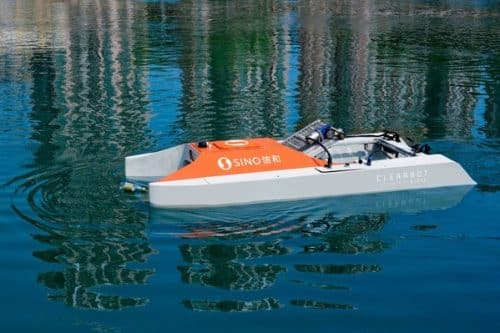Clearbot Neo is a sleek AI-enabled robotic boat designed by Open Ocean Engineering (a Hong Kong based startup), that gathers tonnes of floating debris.
The Clearbot Neo, which is only three metres long and is propelled by a solar battery-powered electric motor, systematically skims the surface and sweeps up floating debris, using artificial intelligence to distinguish and log the types of rubbish it collects and where it finds it. It can collect data for companies, governments, non-governmental organisations, and individuals using Microsoft Azure and monitor the origins of marine debris. Subsequently, it can combat pollution at the source.

It may also haul in up to a metric tonne of garbage per day for recycling or disposal. It can handle local oil and fuel spills by collecting up to 15 litres of pollution each day when coupled with a bespoke boom. It also uses a two-camera detection system to capture massive amounts of data on the cloud.
One camera scans the surface of the water to help the bot detect trash and avoid marine life, navigational hazards, and other vessels, making it safe and adaptable for river and harbour work. The second camera takes a picture of each piece of trash that falls onto the conveyor belt and sends it to the company’s data compliance system, which is hosted on Microsoft’s Azure cloud. When this information is combined with variables such as sea current and tide statistics, environmentalists and maritime authorities have a good start on locating the waste sources. Data on water quality is also sent to the cloud.
In Bali, Clearbot Neo’s creators Sidhant Gupta and Utkarsh Goel created a simple aluminium prototype, which they later updated to a fibreglass version when they returned to Hong Kong. A series of prototypes followed, the most recent of which is the elegant Clearbot Neo. The most difficult aspect of the research was creating an artificial intelligence model that could detect and identify waste in water.
“We simply didn’t have the computing power available to train, run and test the models,” Gupta says. “This is exactly where Azure comes in. We ended up getting an AI for Earth grant from Microsoft in Spring 2020, and over the next year developed the AI model entirely on the Azure platform”






